Creating a comfortable and healthy living environment while maintaining suitable humidity levels in your home is necessary. Humidity significantly influences indoor air quality, in particular, the respiratory health of the occupants and the health of the house itself. Depending on your requirements and the climate around you, you may have to pick between humidifiers and dehumidifiers. In this article, we will compare these two pieces of equipment in-depth by looking at how they function, the advantages they lend, and their optimal application. With this information, it will be easier for you to select the most suitable device for indoor air problems.
What’s the Difference Between a Humidifier and a Dehumidifier?
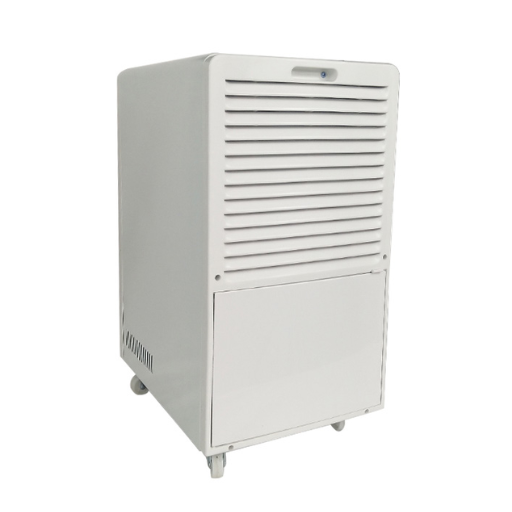
A humidifier’s primary purpose is to add moisture into the air to raise humidity levels in enclosed places. It is usually used in areas with dry air which could lead to problems like dry skin, respiratory issues, or damage to wooden furniture. On the other hand, a dehumidifier is a device that decreases humidity levels by eliminating water vapor in the air. In regions with high humidity, this appliance is useful to avoid the growth of mold, musty odors, and moisture-induced structural damage. Each of these devices adds value in their respective situations concerning the issues caused by humidity or the lack thereof.
How Does a Humidifier Operate?
Humidifiers work by dispersing water vapor or steam into the air to increase humidity. There are various techniques to achieve such an outcome. For instance, ultrasonic vibrations create a fine mist, while an evaporative system where a fan blows air through a wet wick can also be used. Other types of humidifiers use heating components to generate warm mist, or cool mist, depending on what is desired. These devices work best with an indoor humidity range of 30 to 50 percent or else air quality diminishes and dryness is believed to occur.
Dehumidifier’s Terminology And Operation
A dehumidifier receives moist air, cools it with internal coils so the moisture condenses into water droplets, and reheats the dehumidified air before returning it to the environment. Moisture is collected in a reservoir or drained continuously through a hose. This approach effectively reduces the overall moisture within places, which prevents mold growth and enhances air quality.
Conditions Regarding The Humid Nature of Your House
The humidity of rooms is a very important factor for the air quality and comfort of those living there. Ideal relative humidity should be anywhere between 30% and 50%, while the rest of the alkaline and acidic parameters can lead to the formation of molds and dust mites and lead to respiratory problems because of overly dry conditions. Additionally, 30% or lower temperatures can lead to static skin, cracked skin, and low moisture in the air. Whereas anything above 50% is too much, encouraging microorganism growth and horrid scents. A hygrometer will accurately measure indoor humidity to select humidification and dehumidification systems.
When Do You Need a Humidifier?
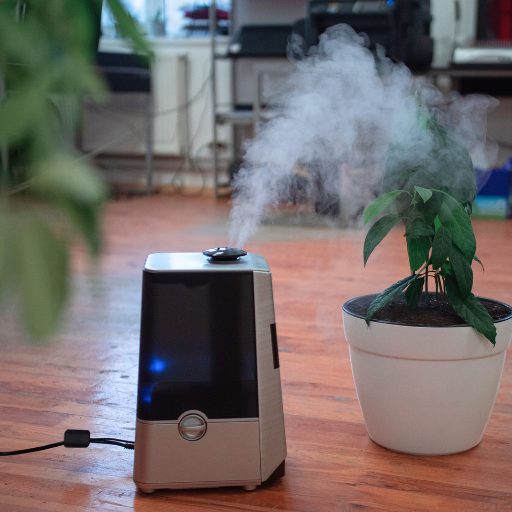
Excessive dryness of indoor air, prevalent during the winter seasons or in dry climates, requires a humidifier. Very low humidity can accompany dry skin, itchy eyes, and scratchy throats. Additionally, dry air can damage easily breakable or bendable items such as wooden furniture and musical instruments. To help minimize these concerns, it is best to keep the humidity levels between 30% to 50%. If the levels drop below 30%, using a humidifier will help add the needed moisture to the air.
Signs of Low Humidity in Your Home
When your house experiences low humidity, it can lead to many issues. Some of the more noticeable ones are dry, itchy skin and lips, frequent eye irritation, and static electricity shocks. Long term effects of living in less than 30 percent humidity include worsened respiratory conditions, dry noses, or nasal irritation. These factors can make allergy or asthma symptoms much worse than they already are. In addition to this, doors, wooden floors, and furniture may start cracking or warping due to the low moisture. These changes may also lead to house plants wilting, browning, or even drying leaf edges. All of these factors indicate that a house is experiencing low humidity. You could invest in a hygrometer and monitor the humidity levels to prepare you to deal with these issues.
Benefits of Using a Humidifier
Multiple benefits can come from using a humidifier. These range from improved health to providing comfort while indoors. A humidifier maintains an optimal humidity between 30% and 50%, which is ideal for reducing skin, throat, and nose irritation caused by dry air. These devices are also beneficial for people who suffer from allergies, asthma, or any other respiratory issues as it keeps moisture in the air which greatly reduces the odds of those individuals having a hard time breathing.
Aside from personal health benefits, maintaining proper humidity helps the wood components such as furniture, flooring, and other fixtures that are prone to bending and fracture from exessive dryness. Further, moisture levels help in reducing static build up which occurs in dry hygrometric conditions; therefore increasing overall living comfort. Advanced air humidifier systems use built-in hygrometers and customized output settings to ensure proper moisture levels without flooding. To fully enjoy the benefits, regular maintenance must be conducted to prevent mold and bacteria growth.
Types of Humidifiers: Which is Best for You?
- Ultrasonic Humidifiers
- Ultrasonic Humidifiers maintain ultrasonic vibrations at high ear-piercing frequencies, dispersing water mist into the air. They provide mist in both warm and cool temperatures and, are powered efficiently silently, and save energy, making them suitable for use in nurseries and bedrooms. However, they require regular cleaning to supersede any build-up of mineral deposits that come from hard water.
- Self Regulating Evaporative Humidifiers
- This type uses a wet wick or a filter to draw in dry air, which the humidifier moistens through evaporation. Because their self-regulating properties prevent the humidifier from overhumidifying the room, they work best in regions with dry climates. Their affordability makes them well suited for use in large areas. Filter replacement is necessary to prevent mold build-up.
- Steam Vapoiser Humidifiers
- Using steam vaporizers involves heating water up to steaming point and letting it cool slightly before emitting it. Proper usage can clear respiratory issues and works great with medicinal additives. Although highly effective, steam vaporizers can be energy inefficient and require caution to ensure safety while boiling water.
- Impeller Humidifiers
- Using rotational discs, impeller humidifiers fling water into a diffuser, turning the water into fine droplets dispensed into the air. Impeller humidifiers are usually quieter than their counterparts and are a great option for homes with children as they do not heat water. They do, however, need regular cleaning to avoid bacterial growth.
- Centralized Humidifiers
- Centralized humidifiers operate software which connects to the building’s HVAC system, leading to humidity control within the entire house. These systems are particularly beneficial when maintaining the same humidity level across large spaces, although they tend to be expensive and need professional installation. This is an excellent solution for people not wanting to perform regular maintenance. Regular HVAC system maintenance allows these humidifiers to work at their very best consistently.
When Should You Use a Dehumidifier?
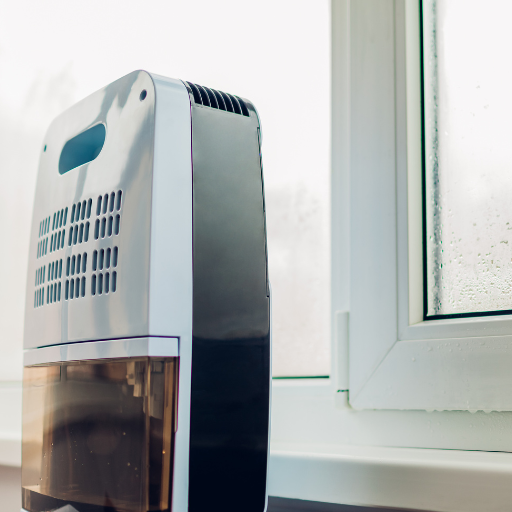
Dehumidifiers best deal with excessive moisture in the air above fifty percent. This is especially so for places likely to be damp or poorly ventilated, such as basements and bathrooms. Areas such as these are familiar places for mold formation which leads to musty smells coupled with potential property damage, making it imperative that dehumidifiers are utilized. Dehumidifiers are highly advantageous for people suffering from respiratory issues as they enhance the overall air quality. Dehumidifiers in your home also invites many other benefits, such as the indoor humidity being maintained at an optimal level. This is usually around thirty to forty percent.
Reasons Why You Might Need A Dehumidifier
One of the clearest signs that your house suffers from excessive moisture is condensation forming on windows. This signals that there is warm air filled with moisture that makes contact with icy surfaces. Warm moist air interacting with cold surfaces such as windows is bound to happen during the winter season when the outside temperature is low. Along with condensation, the formation of mold and mildew in places like bathrooms, basements, and around leaks is another sign that suggests the need for a dehumidifier. Leaks cause surrounding areas to become damp, making it a perfect breeding ground for the fungi, so getting a dehumidifier is bound to enhance air quality.
Another symptom that is usually common for excessive humidity is a persistent musty odor which usually comes from stagnant air and the spores of mold. In addition, high levels of humidity can destroy materials. For instance, wood can warp, paint can peel, and walls and ceilings can get stained. Some health effects like aggravated allergies, respiratory pain, and skin irritation can also warn someone of the presence of a dehumidifier. The optimal indoor humidity relative ranges between 30% and 50% in an attempt to maintain a suitable living condition while preventing issues such as these. Such parameters can be monitored with the use of relative humidity measuring equipment, such as hygrometers.
Benefits of Having a Dehumidifier
Dehumidifiers are known to provide multiple benefits when it comes to the quality of the air inside of a building and even the durability of the structure. They work by lowering the buildupped moisture within a space, which helps stunt the growth of mold, mildew, and dust mites. These growths are known to be allergens that can aggravate the condition of asthma and many other respiratory diseases. Dehumidifiers are important in protecting indoor materials like wood, paint, and furniture, as they help decrease the chances of moisture damage caused by a high amount of humidity. Apart from that, a dehumidified environment gets rid of musty odors, which improves the comfort of people within the space. The ideal relative humidity is between 30%-50%.
The availability of newer models of dehumidifiers comes with features that make their use more effective. Some of the particularly crucial aspects are the capacity, that is in terms of PPD or moisture extracted, and the energy costs to operate the device which is in terms of EF. These parameters are usually given in L/kWh; the higher the value, the better for the consumer. Some modern models have incorporated the use of hygrometers with adjustable settings to maintain the desired humidity indoors for optimum efficiency. When chosen and utilized correctly, a dehumidifier can go a long way in improving the quality of the enclosed environment, making it healthier and more sustainable.
Dehumidifiers and Indoor Air Quality
Dehumidifiers are particularly useful in reducing the relative humidity of the air in premises to improve the air quality by eliminating moisture and inhibiting the conditions that are favorable to the growth of mold, mildew, dust mites and their related allergens which are detrimental to respiratory health. These organisms thrive between 30 to 50 relative humidity and maintaining these values helps in combating them while improving the air quality within the enclosed structures.
Dehumidifiers are currently measured with predefined parameters, including the device capacity, often approximated as the total moisture extracted per day (PPD). The scale is suitable for a particular level of humidity presence and the space’s size. For larger spaces or higher humidity levels, units which are specifically designed for these conditions typically have a capacity between or more than 20 to 70 PPD. Energy Factor (EF), which provides insight into the energy efficiency of the specific unit is also a critical structuring component as well where the unit is rated as L/kWh. The greater the EF units, the higher the cost efficiency and the more environmentally friendly the device is.
Some advanced features that modern dehumidifiers use include integrated hygrometers to monitor humidity levels, set adjustable humidistats for target humidity, and even auto-defrost capabilities. Along with these set-and-forget functions, these devices have enabled effective humidity control, which is essential to maintaining a comfortable atmosphere. As a result, structures and furniture are protected from moisture-related damage.
How to Measure Humidity Levels in Your Home
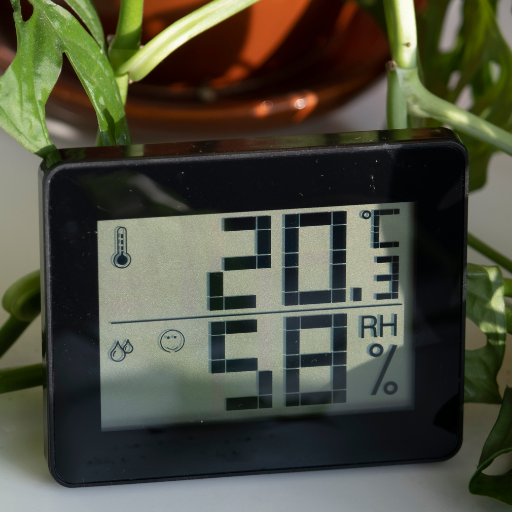
To accurately measure the humidity in a room, one ought to use a hygrometer specially designed for this task. They can be both analog and digital and display relative humidity readings instantaneously. To optimize efficiency, you should set the hygrometer in the middle of the house and ensure that it is sheltered from the sun, windows that tend to produce draughts, and heating appliances because these elements can yield incorrect results. The ideal relative humidity indoors is usually between 30% and 50%, but it can differ between seasons. With consistent monitoring of the conditions, one can ensure a healthy and comfortable atmosphere indoors with no excess dryness or moisture.
Employing a Hygrometer for Precise Measurements
To enhance readings taken with a hygrometer, ensure it is set on a place that best indicates the average humidity characteristic of the room. It is also appropriate to keep a hygrometer at distances from vents, windows, and radiators so as to avoid misleading results from temperature and air movements. If there is a need, calibrate the hygrometer, but ensure you follow the manufacturer’s instructions. Treat the device with care; make sure to check the readings from time to time and adjust the indoor humidity to between 30% and 50% using a dehumidifier or humidifier. Doing so helps to optimize air quality and eliminate problems posed by inappropriate humidity.
Desired Humidity Levels Through the Year
In the winter months, a range of 30% to 40% is optimal indoors. This prevents excessive dryness, which is otherwise uncomfortable and prevents respiratory irritations. Additionally, this avoids damaging furniture or wooden floors. This range also reduces condensation on cold surfaces, such as windows, while allowing for sufficient moisture in the air. In summer, however, a range of 40-50% is recommended to reduce the risks of dust mite and mold proliferation due to higher moisture levels. Adjustment of moisture levels according to seasons promotes a healthy indoor microenvironment by improving air quality, mitigating structural or health-related issues, and enhancing the HVAC system’s efficacy.
Can You Use Both a Humidifier and a Dehumidifier?

Indeed, using a humidifier and a dehumidifier in the same room is possible, and it can aid in maintaining desired levels of humidity throughout the year. These devices serve opposing but complementary purposes – A humidifier works to add moisture to the air to prevent dryness whereas, a dehumidifier works to remove excess moisture to avoid problems like mold. Using this combination, you can effortlessly control indoor humidity levels, ideally remaining between 30 to 50 percent. It is also crucial that the humidity levels are monitored with an appropriate device to prevent overuse of either of the two IoT devices to achieve a balance.
Managing Humidity Year Round
A humidifier and a dehumidifier are required to achieve humidity balance throughout the year. The settings are adjusted based on the season, which means moisturizing during dry winters and dehumidifying during exceptionally humid summers. Aim to adjust indoor humidity levels to between 30 and 50% and use a hygrometer to monitor changes. This ensures that neither device is overworked and maintains a comfortable, healthy environment.
Room-Specific Humidity Control
When it comes to room specific humidity control, it is paramount to make flexible modifications for each space. For example, bathrooms and kitchens produces more moisture due to cooking and taking showers, therefore they need a dehumidifier or appropriate exhaust fans to limit excessive humidity and mold growth. On the other hand, heating inside of bedrooms or living rooms during winter leads to indoor air dryness, these areas may require the use of humidifiers. For precise control of indoor air environment, each of the room’s humidity can be measured using hygrometers to prevent excessive changes and ensure optimum ranges are maintained.
Health Benefits of Proper Humidity Control
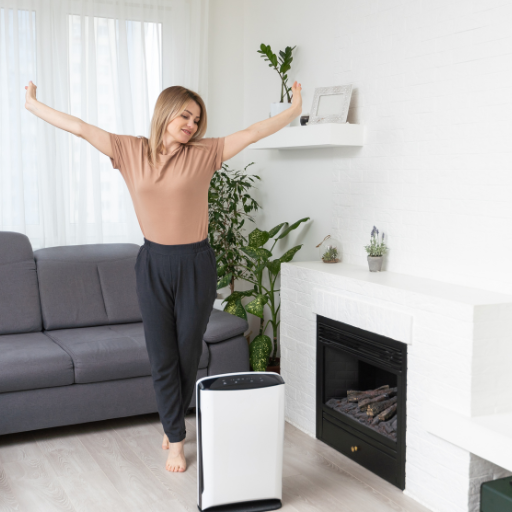
Maintaining the right amount of moisture in the air is beneficial for one’s health. It may lessen respiratory problems and alleviate signs of asthma or allergies due to a decline in allergens such as dust and mold. Properly controlled humidity also provides relief in dry environments where air is overly dry by combating skin and throat dryness along with eye irritation. Properly controlled humidity promotes good immune health since infection-inducing microorganisms find it challenging to thrive and multiply, resulting in a healthier environment.
Alleviating Allergy and Asthma Symptoms
Sustaining indoor relative humidity between 30 and 50 percent may help the development of allergens such as dust mites, mold, and mildew, which flourish in environments with high humidity. These allergens aggravate allergies as well as asthma symptoms. Thus, adequacy in control of relative humidity can greatly reduce airway irritation and asthma attacks. However, marked humidity decreases may worsen asthma, as it drys nasal passages and airways. While humidifiers mitigate dry air in the colder months, dehumidifiers are helpful in the humid climate to reduce moisture, especially in areas like basements. To avoid ventilator irritants, using filters in HVAC systems alongside the routine cleanup of air apparatus improves the health of a room. A hygrometer can use aid in monitoring humidity changes and helps patients avoid using specific devices that could worsen their situation. Moreover, parameters such as air changes and ventilation rates must be maintained to improve air quality and balanced humidity.
Enhancing Respiratory Health and Comfort
Inhale deeply through the nose; maintaining good indoor air quality will significantly enhance one’s respiratory wellbeing. Some key strategies for achieving this include facilitating the exchange of indoor air with outdoor air through proper ventilation, which in turn helps get rid of pollutants and exhausted air. The American Society of Heating, Refrigerating and Air-Conditioning Engineers (ASHRAE) recommends this ventilation rate for residential spaces at 0.35 ACH or 15CFM per person per hour. Furthermore, air purifiers that incorporate HEPA (high-efficiency particulate air) filters are effective for capturing pollen, smoke, dust, and other airborne particles, so up to 99.97% of harmful substances that can cause respiratory discomfort are eliminated.
Humidity is yet another variable that requires close attention. For instance, excessively high humidity levels over 50% may promote mold growth, while overly low levels below 30% may induce dryness of the respiratory tract. An ideal balance can be achieved by monitoring and adjusting humidity with a calibrated hygrometer and suitable devices like humidifiers and dehumidifiers. On the other hand, for homes located in places with cold weather, heat recovery ventilators (HRVs) or energy recovery ventilators (ERV) can improve the air quality within entirely confined spaces by getting rid of bad air without using a lot of energy.
The blending of these measures together with the proper upkeep of HVAC systems, the regular changing of air filters, and the use of surface cleaning practices aimed at removing irritants ensures that the respiratory system function normally. Technological advances such as the incorporation of programmable settings into these devices helps to eliminate repetitive manual adjustments while ensuring that performance targets are met.
Reducing Dry Skin And Other Moisture Related Ailments
The most effective strategy for preventing dry skin is ensuring sufficient hydration and addressing the environmental and lifestyle aspects that cause skin to become dry. The applications of humectants, emollients, and occlusives in skincare products halts skin hydration loss by attracting, retaining, and locking moisture in the skin. Certain ingredients such as glycerin and hyaluronic acid pull moisture to the skin, while others essential for skin barrier repair and maintenance which include ceramides and fatty acids.
Dry skin is affected positively or negatively depending on the region’s climate and the humidity levels. TEWL is usually associated with low humidity. Indoor humidifiers that maintain a humidity level between 30% and 50% can help reduce the amount of moisture lost by the skin. Additionally, avoid hot showers that are known to inhibit skin oil production and instead use lukewarm water to protect the skin lipid barrier.
From a dietary standpoint, sufficient intake of omega-3 and hydration contributes positively to the skin. Introducing these modifications, as well as applying skin-friendly pH products with a pH value between 4.5 and 5.5, greatly aids the restoration and sustenance of skin moisture balance. Receiving appropriate individual skin responses is essential for long-term treatment.
Reference sources
Frequently Asked Questions (FAQs)
Q: What are the main differences between humidifiers and dehumidifiers?
A: Humidifiers and dehumidifiers serve opposite purposes. A humidifier adds moisture to the air, while a dehumidifier removes moisture from the air. Humidifiers are used to combat dry indoor air, while dehumidifiers help reduce excess humidity in your home.
Q: How do I know if I need a humidifier or dehumidifier for my home?
A: To determine whether you need a humidifier or dehumidifier, consider the symptoms you’re experiencing. If you have dry skin, static electricity, or respiratory issues, you may need a humidifier to add moisture to the air. If you notice condensation on windows, musty odors, or mold growth, you likely need a dehumidifier to remove excess moisture.
Q: In what situations can a humidifier help improve indoor air quality?
A: A humidifier can help in various situations, such as during winter months when indoor heating systems dry out the air, in arid climates, or when you’re experiencing symptoms of dry air like itchy skin, dry throat, or nosebleeds. Humidifiers are also beneficial for people with respiratory issues or allergies.
Q: When are dehumidifiers most useful in a home?
A: Dehumidifiers can help in humid climates, basements, or areas prone to moisture buildup. They’re particularly useful when you notice signs of excess humidity like condensation on windows, musty odors, or mold growth. Dehumidifiers can also complement your air conditioning system to maintain optimal humidity levels.
Q: Can humidifiers and dehumidifiers be used with air conditioning systems?
A: Yes, both humidifiers and dehumidifiers can be used in conjunction with air conditioning systems. While air conditioners naturally remove some moisture from the air, a dehumidifier can provide additional moisture control in very humid environments. In dry climates, a humidifier may be needed to counteract the drying effect of air conditioning, especially with central air systems.
Q: What type of humidifier is best for home use?
A: For home use, a cool-mist humidifier is often recommended. Cool mist humidifiers are safe to use around children and pets, as they don’t involve hot water. They’re effective at adding moisture to the air and can help alleviate symptoms of dry air. However, the best type may depend on your specific needs and the size of the area you want to humidify.
Q: How do I maintain the right balance of humidity in my home?
A: To maintain the right balance of humidity, use a hygrometer to monitor humidity levels. Ideal indoor humidity should be between 30-50%. If levels are consistently below 30%, you may need a humidifier to add moisture. If levels are above 50%, you might need a dehumidifier to remove excess moisture. Adjusting your heating, ventilation, and air conditioning (HVAC) system, including your heat pump if applicable, can also help maintain proper humidity levels.
Q: Can using a humidifier or dehumidifier affect my energy bills?
A: Both humidifiers and dehumidifiers consume energy and can affect your electricity bills. However, they can also help your HVAC system work more efficiently. For example, humid air feels warmer, so a dehumidifier might allow you to set your air conditioner to a higher temperature. Conversely, properly humidified air in winter can feel warmer, potentially allowing you to lower your heating costs. The impact on your energy bills will depend on usage and your specific climate conditions.



